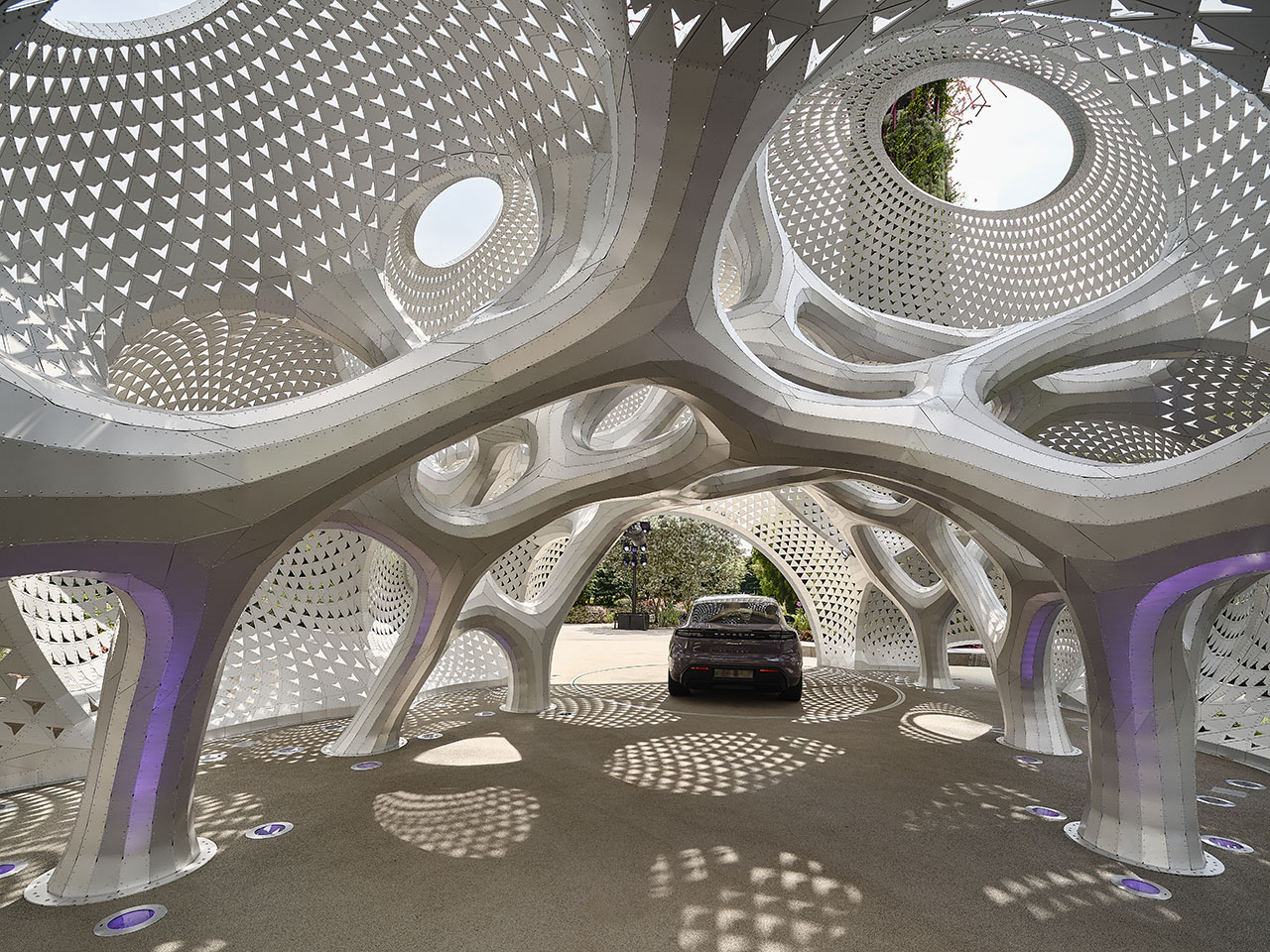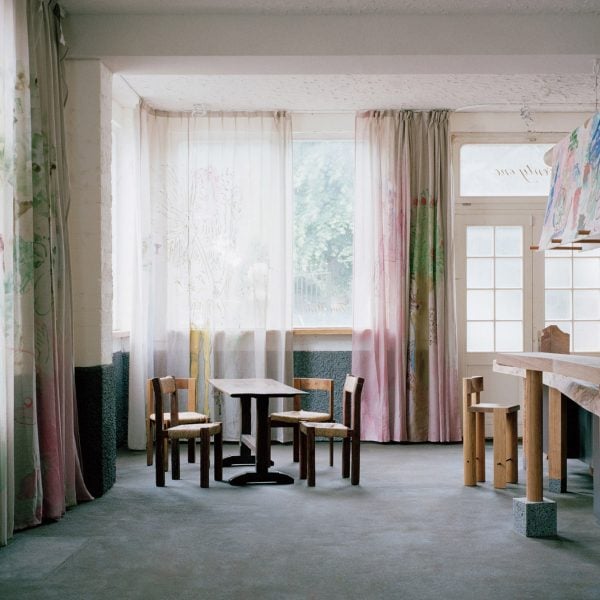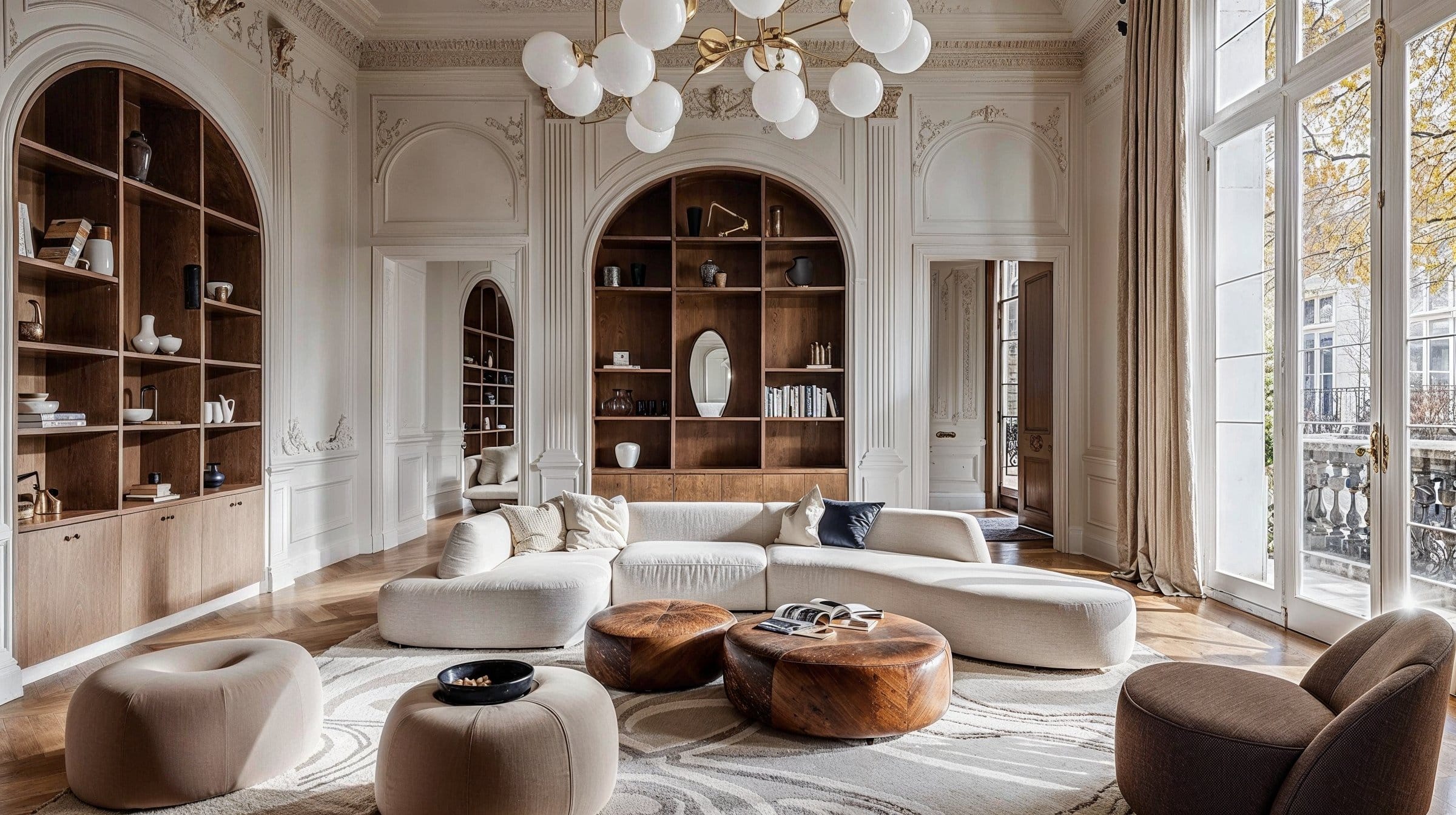Continuing Dezeen’s review of 2020, reporter Natasha Levy has selected some of the biggest interiors trends of 2020, including Covid-safe spaces, curtains and unusual bathrooms.
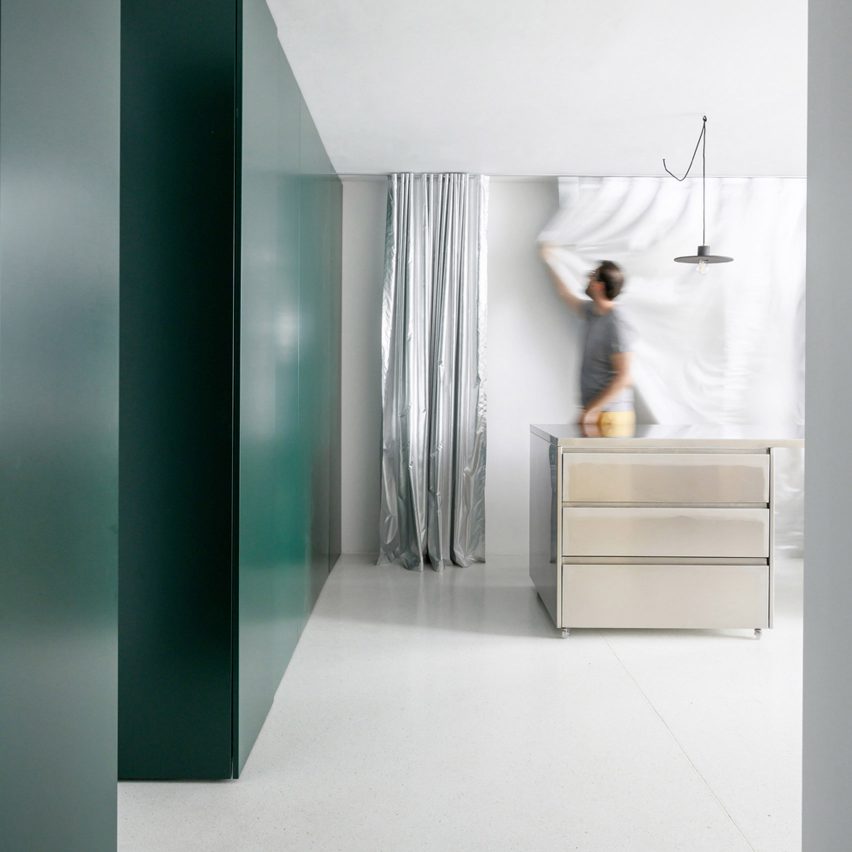
Curtains
Several architects and designers were drawn to incorporating curtains in projects this year. Arhitektura d.o.o enclosed the living area of a Slovenian apartment with shiny silver curtains, helping its inhabitants feel cosier and closed-off.
Ater Architects made the floor plan of a Kyiv apartment more flexible by replacing walls with cobalt-blue drapes that stretch from floor to ceiling. Architecture studio Azab did the same in a Bilbao apartment, but opted to use paler sky-blue curtains.
Serie Architects also suspended bronze chainmail curtains above the kitchen of a Mumbai restaurant to make it look more like a stage – and focus diners’ attention on the theatricality of cooking.
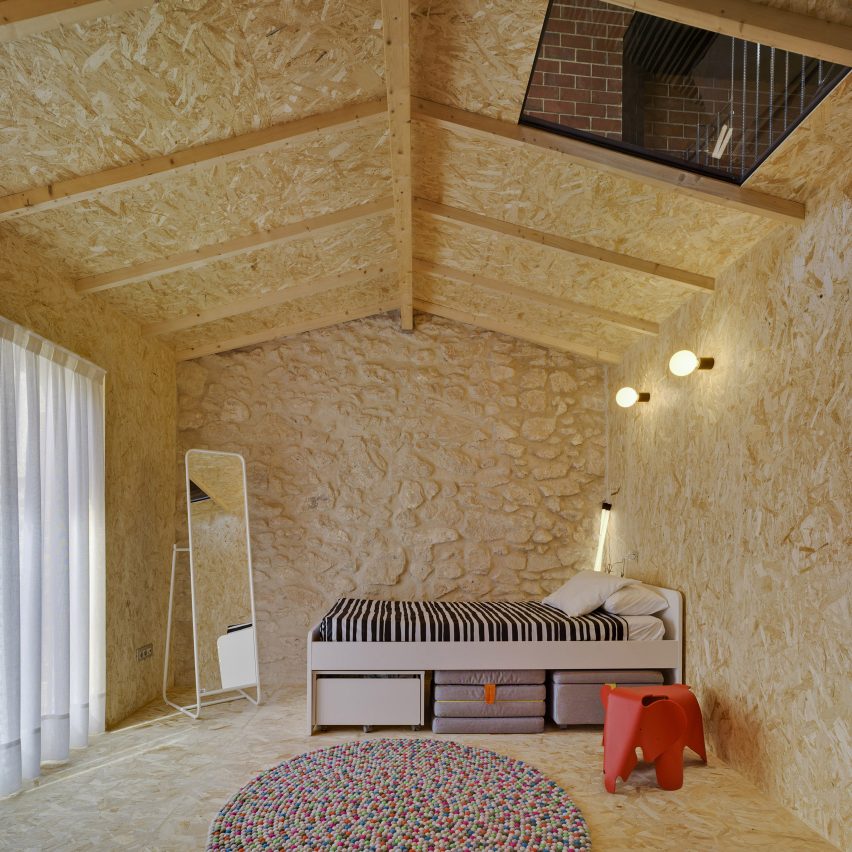
OSB
This year, there’s been an increasing appreciation of oriented strand board (OSB) – a type of engineered timber that’s made by compressing strips of wood in particular directions.
The material is already extensively used in building construction as preliminary sheathing for floors, walls or roofs, but a growing number of architects and designers have come to like its aesthetic qualities.
Some used OSB sparingly; design studio CATS, for example, employed the wood to make display plinths and shelves for a lifestyle store in Nanjing. Others went all out – Italian architect Francesca Perani lined the entire interior of a 25-square-metre guest cabin with OSB in hopes it would imbue the space with “a sense of warm comfort”.
Architects Juan Alberto Andrade and María José Váscones then made an OSB meeting room for an open-plan office in Ecuador, while Studio Edwards fabricated yellow-framed OSB work pods for a vacant warehouse in Melbourne.
For the revamp of a home in Spain, architecture studio La Errería also set bedrooms inside gabled OSB boxes.
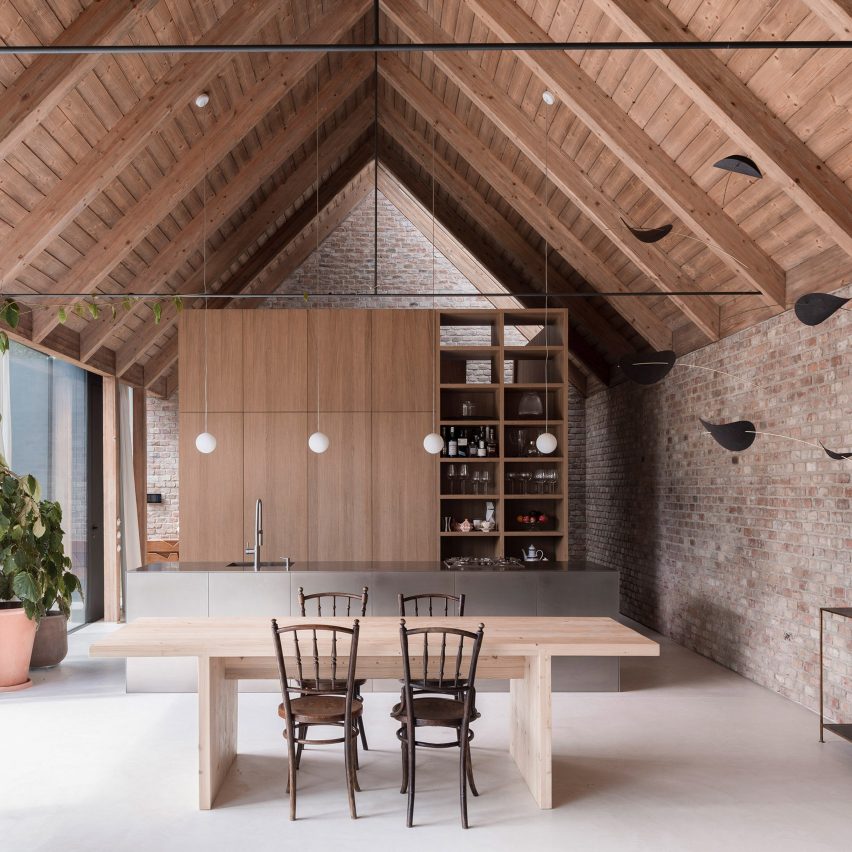
Rustic style
Against the turbulent backdrop of 2020, readers this year seemed to find comfort in warm, rustic-looking spaces.
One of the most popular interiors projects this year was architect Timothy Mercier’s conversion of a French farm building into a home for his parents, which he decorated with pieces he found in a Parisian flea market.
Readers also loved architect Martin Skoček’s update of a Slovakian family home, which he lined with time-worn bricks, and Olson Kundig’s cosy, self-designed cabin, which is furnished with leather sofas, patterned rugs and wood burners.

Cinema
Several projects this year took cues from the realm of film as architects and designers indulged their inner cinephile.
Tasked with creating “out of this world” interiors, Atelier Caracas modelled a Venezuelan day spa after Stanley Kubrick’s 2001: A Space Odyssey. Each of the spa’s treatment rooms features porthole windows that are meant to resemble the movie’s sentient artificial intelligence character, HAL 9000.
Over in Beijing, Xiaoxi Xiong designed an office to have the same “warm sense of the future” that’s depicted in sci-fi flick Her. Masquespacio also referenced a scene from Playtime, a 1967 film directed by Jacques Tati, to create a whimsical co-working space in Valencia.
Other designers sought inspiration from the small screen. Examples include Vinki Li, who based a bar in Guangzhou off of the TV show Mad Men, decorating it with retro props like typewriters and rotary dial telephones.
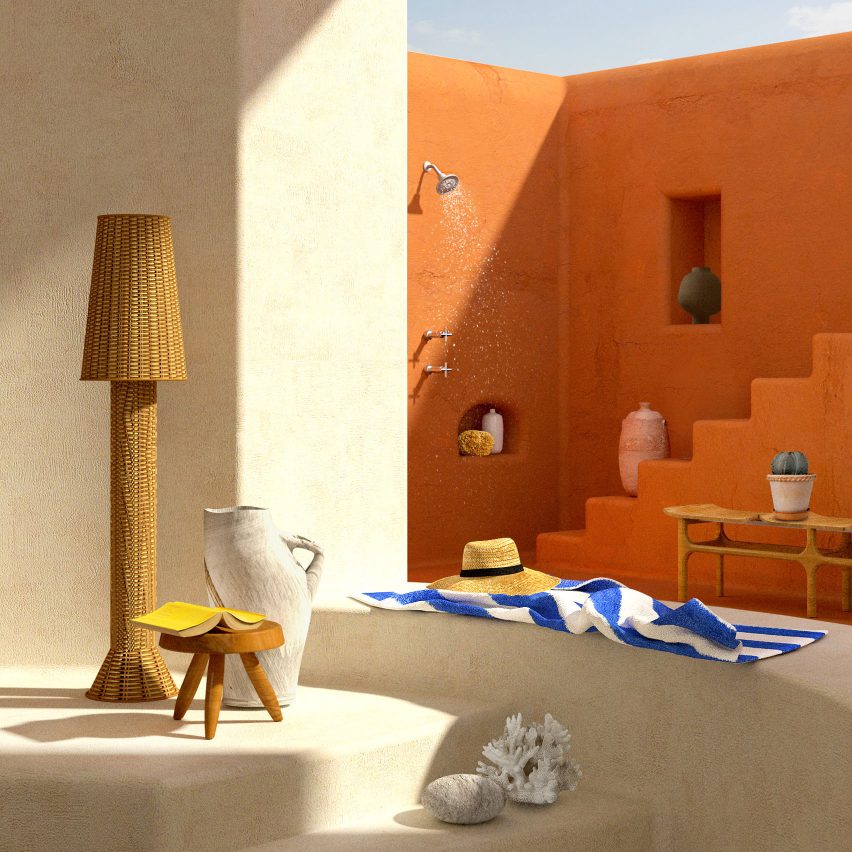
Renderings
As the coronavirus pandemic and stay-at-home orders brought ordinary life to a standstill, many architects and interior designers used renderings as a means of escapism.
Child Studio unveiled images of a fictitious, white-washed seaside villa called Casa Plenaire, which is meant to serve as a “hideaway for the lockdown world”. Sivak & Partners then envisioned a glass-fronted hotel suite in Odessa that would have uninterrupted ocean views.
Meanwhile, creatives Charlotte Taylor and Nicholas Préaud dreamt up Casa Atibaia, an imaginary riverside house in São Paulo that draws on the modernist architectural style of Lina Bo Bardi.
Siblings Davit and Mary Jilavyan also made-up an entire residential community called Sonora Art Village. Designed to feel “far from grey reality”, the made-up village would be populated by vivid pink, orange, purple and yellow homes.
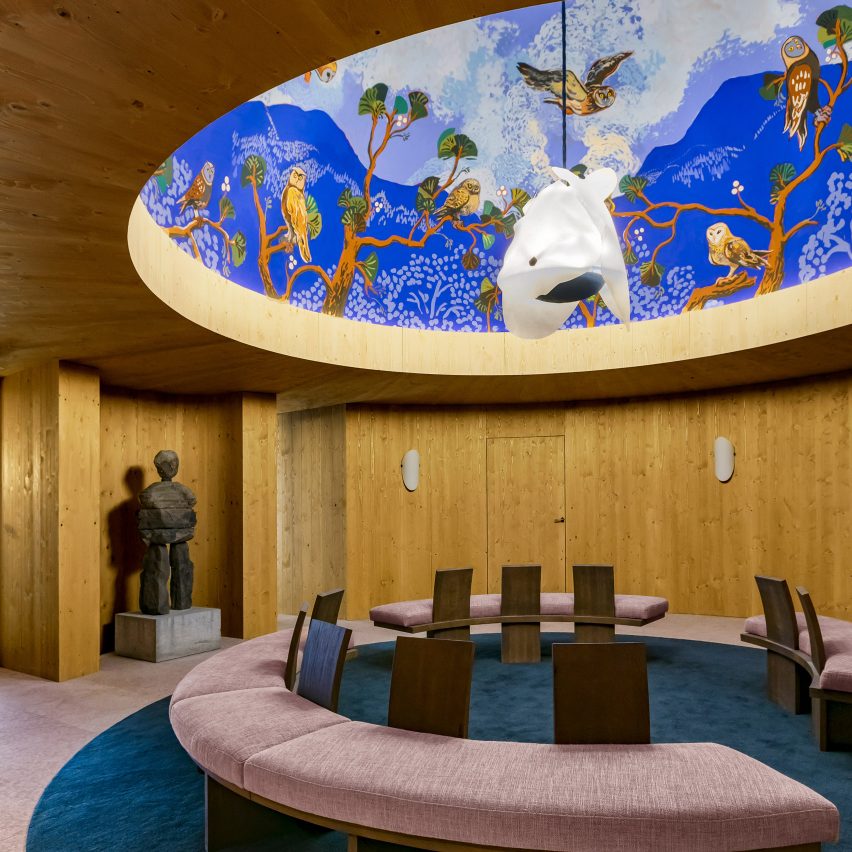
Murals
Eye-catching murals made several appearances in interiors projects this year. Rolling hills and twisting trees feature in the verdant mural that artist Abel Macias created for lifestyle brand Flamingo Estate’s Los Angeles pop-up, while the fresco Matthieu Cosse fashioned for France’s Le CouCou hotel depicts owls soaring above mountain peaks.
Visual artist Alicja Biala included flowers, birds and strange mythical creatures in the super-sized mural she produced for an MVRDV-designed building in Wroclaw, which stretches 500-square-metres across the ceiling and walls.
Not everyone opted for the medium of paint – design duo Folklore used over 1,000 pieces of glass and ceramic to make a geometric mural for a swimming pool in Sweden.
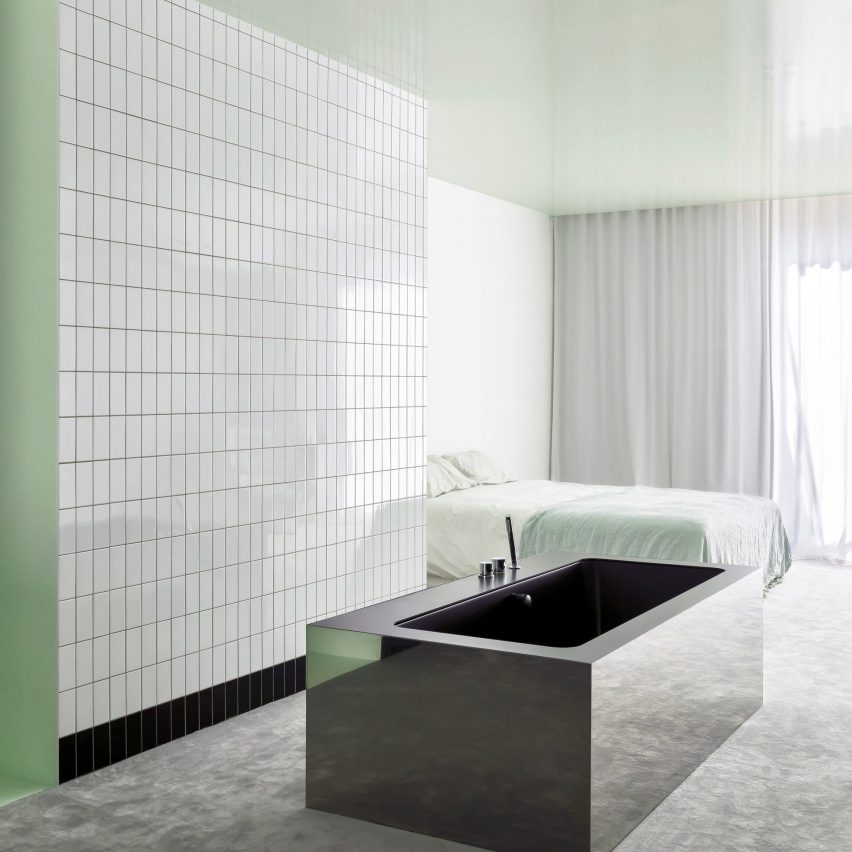
Atypical bathrooms
Basic baths, showers and sinks seemingly weren’t enough for architects and designers this year, who created some unconventional bathing spaces.
When Szczepaniak Astridge overhauled the London home of architectural photographer Edmund Sumner, the practice placed a bathtub up in the loft. The loft – which also contains Sumner’s bedroom – is fronted by glass, meaning inhabitants can soak while overlooking the greenery of a nearby park.
Atelier Dialect also added a standalone bath to the bedroom of an apartment in Antwerp, wrapping its exterior in panels of mirrored steel. The bath backs onto a shower room that’s painted a pastel-green hue that matches the colour of polyurethane foam.
Design studio La Firme also built a huge walk-in wet room “big enough for two” inside a Montreal apartment.
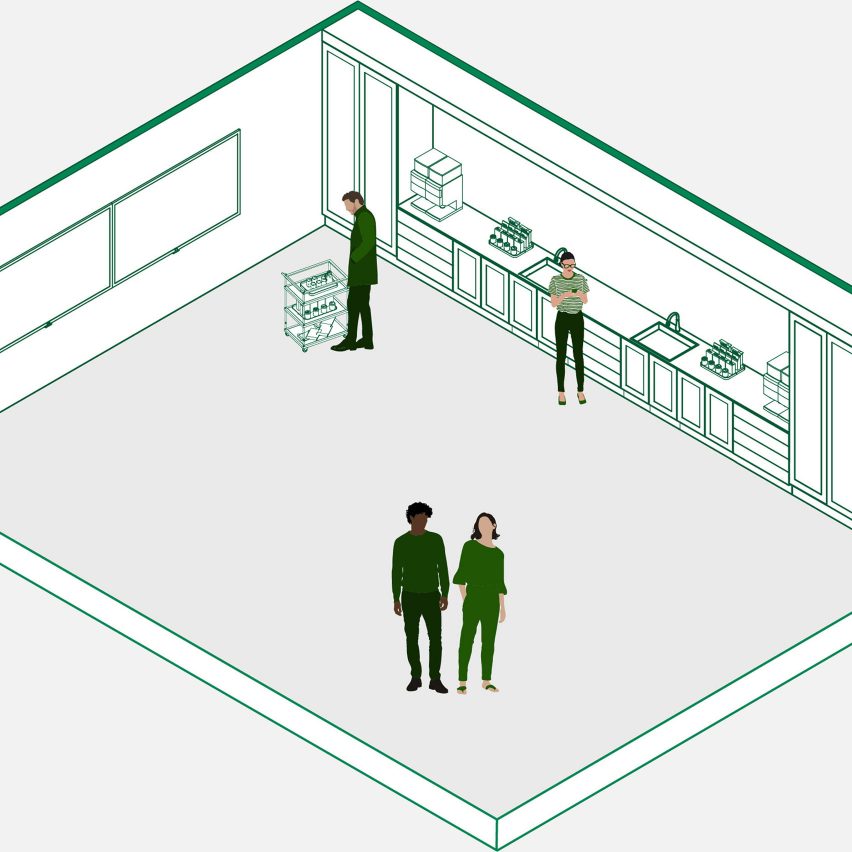
Covid-safe spaces
The coronavirus crisis forced those working in the architecture and interiors industries to consider how post-pandemic spaces will be designed – both inside and out.
Designer Sevil Peach mused that corporate headquarters will become a thing of the past and, going forward, employees will be asked to work from smaller company “hubs”.
Meena Krenek, who is an interior designer at Perkins and Will, similarly predicted that offices will just become spaces for meeting and socialising, while a majority of focused work will still be carried out by staff at home.
Architect Ben Masterton-Smith then suggested that designers working on hospitality spaces would have to start focusing more on fashioning “enticing” outdoor eating areas so that customers can dine in safety.
Meanwhile, interiors expert Michelle Ogunhehin forecasted that future homes will be specifically designed to mitigate the virus and will come complete with immunity-boosting air filtration systems and touchless technology.




